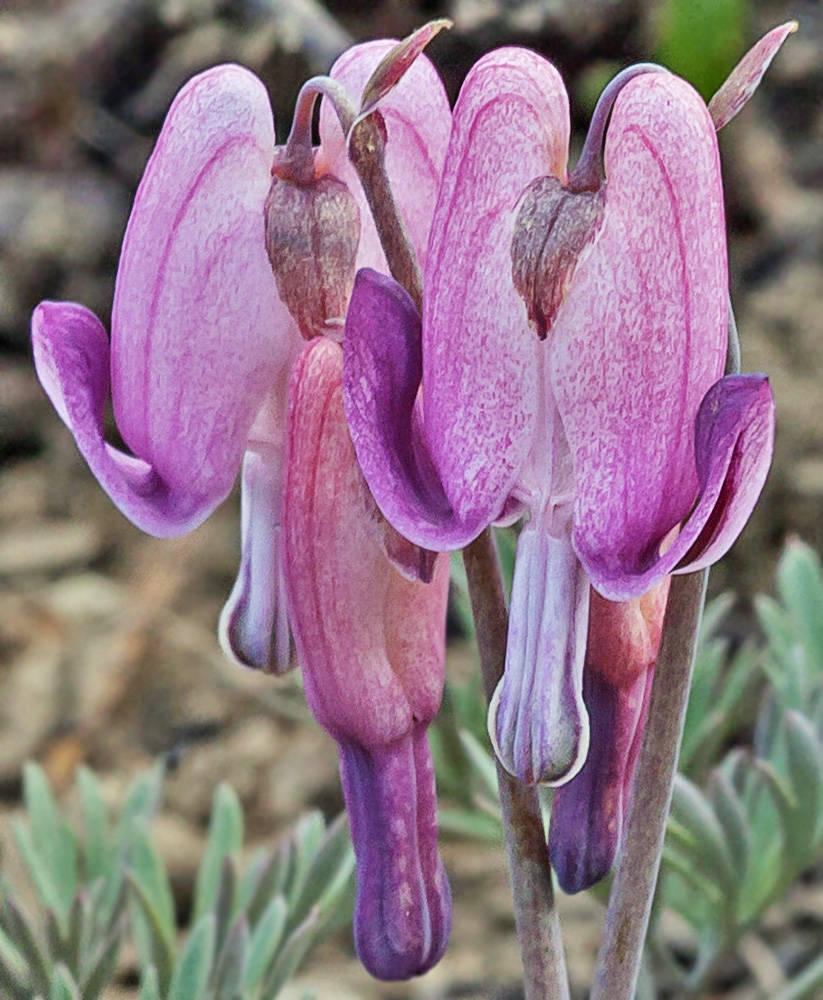
[This taxon will be assessed for treatment in volume 3 of Flora of Oregon, which is not yet published.]
as described under Dicentra pauciflora
Plants perennial, scapose, from rhizomes or clusters of spindle-shaped tubers, bulblets often present at proximal ends of tubers or along rhizomes. Leaves (7-)9-13(-16) × 3-7(-10) cm; petiole (2-)4-7(-10) cm; blade with 3-4 orders of leaflets and lobes; ultimate lobes linear-lanceolate, (2-)7-13(-18) × 1.5-3 mm, occasionally irregular, minutely apiculate. Inflorescences racemose, 1-3-flowered, barely exceeding leaves; bracts ovate, 4-5 × 2-3 mm. Flowers erect to nodding; pedicels 5-25 mm; sepals ovate to lanceolate, 5-8 × 2-4 mm; outer petals white to pink, (15-)18-22(-25) × 3-6 mm, reflexed portion (5-)7-8(-11) mm; inner petals purple, (15-)18-22(-24) mm, blade spoon-shaped, 2-3 mm, claw obovate-elliptic, ca. 10 × 3-4 mm, crest absent; filaments of each bundle connate at base and near apex, distinct in between, distinct portion of median filament forming loop that almost doubles back to its proximal end; nectariferous tissue borne at lowermost point of loop and often extending to base of median filament; style 7-11 mm; stigma 2-lobed, much reduced, ca. 2 times wider than style. Capsules spindle-shaped to ovoid, 10-15 × 4-6 mm. Seeds reniform, ca. 2 mm diam., smooth, elaiosome present. 2 n = 16.Flowering late spring-late summer. Openings in coniferous forests, in volcanic and granitic soils; 1200-2700 m; Calif., Oreg.